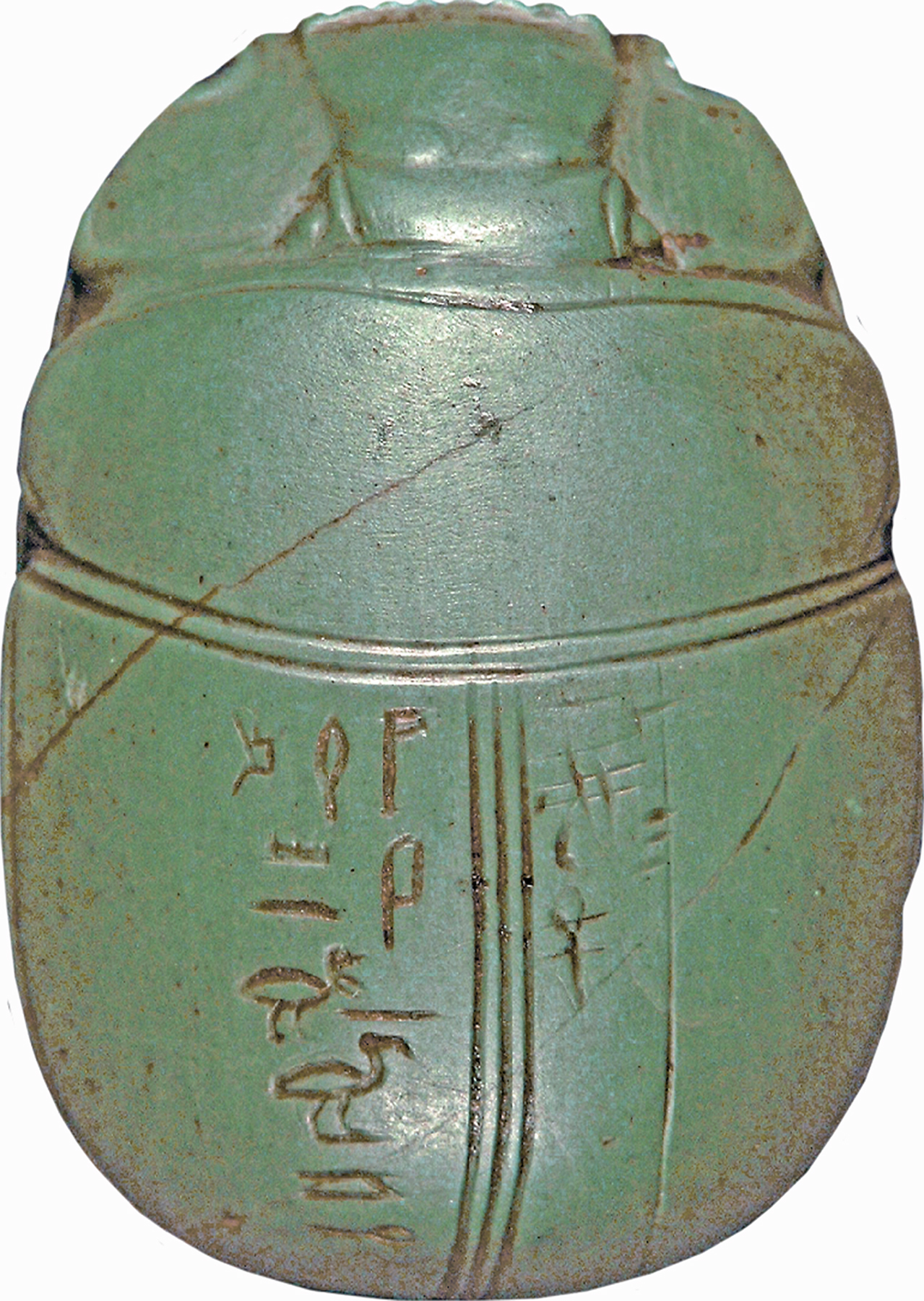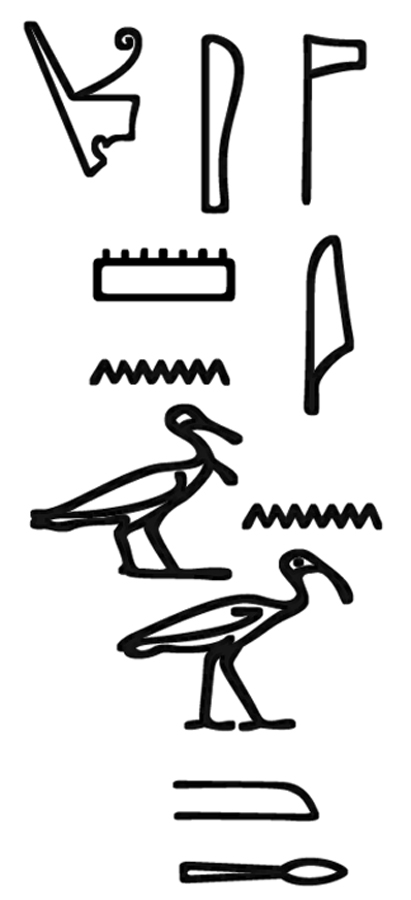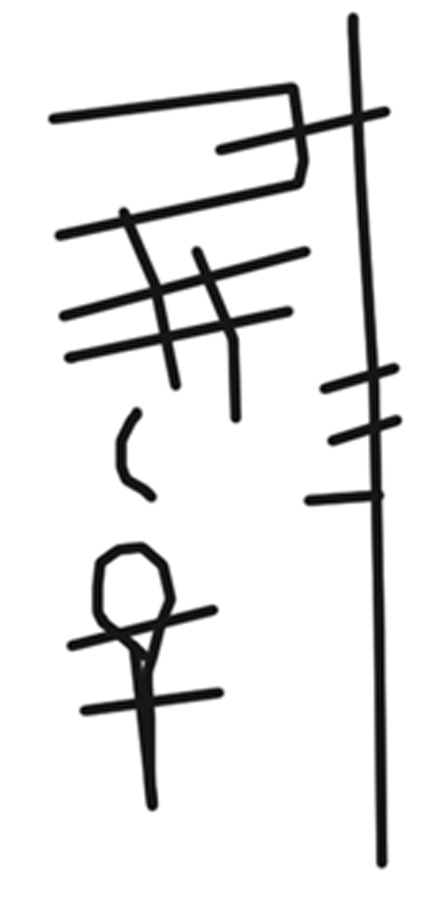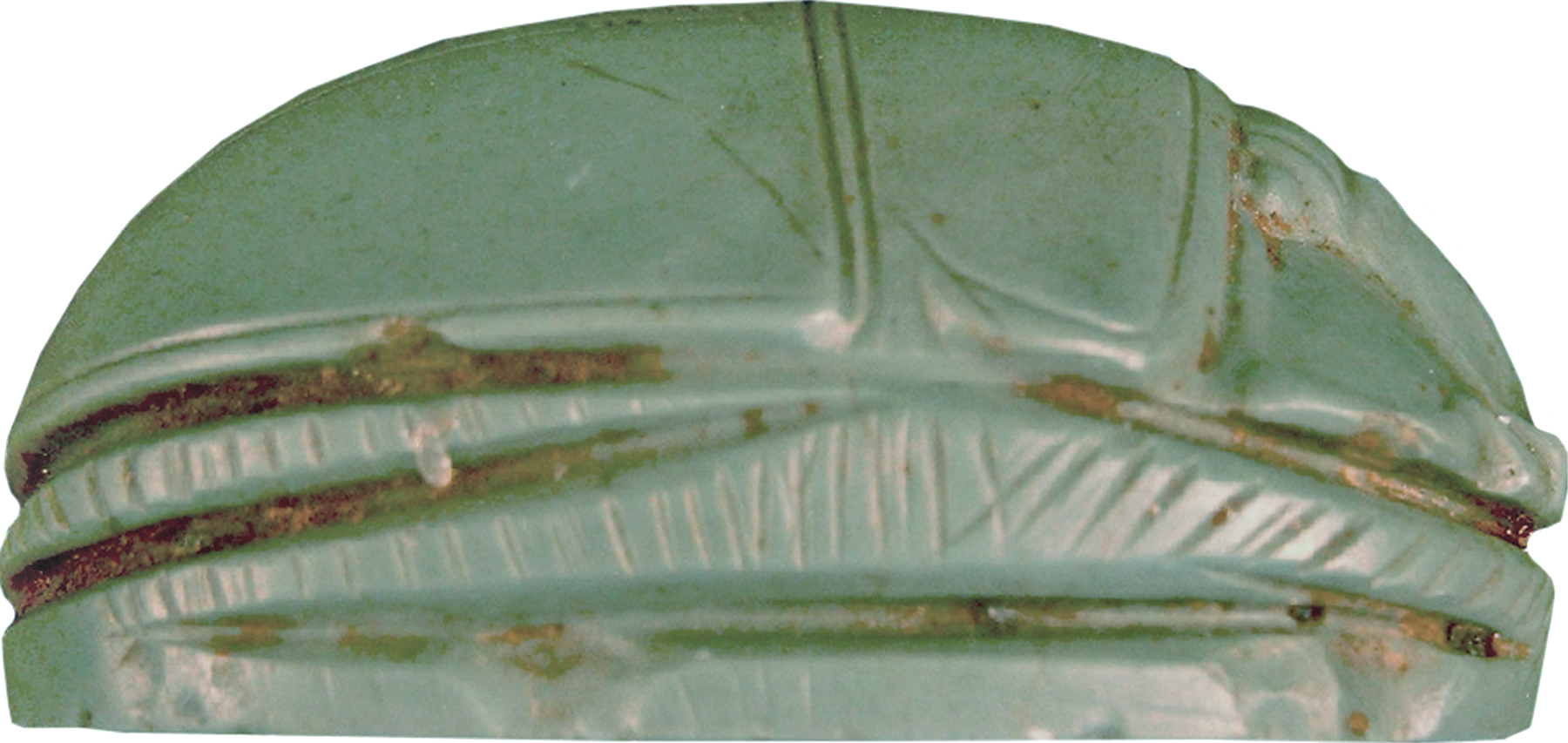Heart Scarab of Bak-en-Djehuti
(Ancient Egypt and Nubia )
The ancient Egyptians believed that the dung beetle, the Scarabaeus sacer, was one of the manifestations of the sun god. Representations of these beetles were used as amulets, and for ritual or administrative purposes.
This scarab is a so-called Heart scarab which was used for the deceased. The linearly incised bottom inscription contains spell 30 B of the Book of the Dead. The left reading text is displayed in ten lines, separated by nine, very straight text-divider, and framed by an oval line. The hieroglyphs are less detailed and slightly irregular. The layout is well organized, and the signs evenly spaced. The back of the scarab is very high, and the highest point at the partition between pronotum (dorsal plate of the prothorax) and elytron (wing cases). Both parts have incised borderlines, a slightly curved double partition lines, and a triple division line between the wing cases. The rectangular head is flanked by quarter-spherical, two-stage eyes with lid markings. The side plates and the clypeus (front plate) are trapezoidal. On the left wing case is an inscription with name and title of the owner: "the priest of Amun: Bak-en-Djehuti," and on the right wing case a crossed lines pattern and a formula wishing him life. The style of the inscription on the back differs from that on the bottom, and it is most likely that the text on the back with the individualization was added later by another hand. The crossed lines on the right wing case are less deeply incised, and might have been added later, only the ankh-sign (meaning "life") looks similar to the inscription on the left wing case. The extremities have natural form, and vertical and diagonal hatch lines for the tibial teeth and the pilosity (hair). The low, oval base is slightly asymmetrical and has a smaller head.
The scarab was produced to be placed in the wrappings of a mummy. It was individualized by his name of the deceased: Bak-en-Djehuti. Such funerary amulet should cause the renewal of the deceased, and support him in the Weighing of the Heart procedure in the Judgement hall of the underworld.
Inscription
Provenance
Provenance (from the French provenir, 'to come from/forth') is the chronology of the ownership, custody, or location of a historical object. Learn more about provenance at the Walters.
Dikran Kelekian, Paris and New York [date and mode of acquisition unknown] [as from Luxor]; Henry Walters, Baltimore, 1911, by purchase; Walters Art Museum, 1931, by bequest.
Conservation
| Date | Description | Narrative |
|---|---|---|
| 11/24/1998 | Examination | survey |
Geographies
Egypt (Place of Origin)
Measurements
H: 11/16 x W: 1 1/16 x L: 1 1/2 in. (1.8 x 2.7 x 3.8 cm)
Credit Line
Acquired by Henry Walters, 1911
Location in Museum
Accession Number
In libraries, galleries, museums, and archives, an accession number is a unique identifier assigned to each object in the collection.
In libraries, galleries, museums, and archives, an accession number is a unique identifier assigned to each object in the collection.
42.380


















